Next day I headed back along Odos Egnatia to Amphipoli. I was still driving extremely sedately, and straddling the line separating the slow lane and the paved shoulder, as is the courteous way to drive in Greece if you aren’t driving fast. It allows cars in the slow lane to overtake without having to leave the slow lane. I know, right? I was happy to take it easy though. After forty-three years of driving on the left side of the road and in a right hand drive car, it takes more than a couple of hours to do exactly the opposite without thinking about it.
I was looking forward to Amphipoli, especially since all the publicity about excavation at the the Kasta Tomb about September 2014 to July 2015. It’s been strangely quiet since then, and I knew I wouldn’t be able to see it of course, as work is underway, but I certainly wanted to see whatever else was to be seen, beginning with the lion.
In Greece, getting to a place isn’t difficult. It’s getting to the exact part of the place that’s the challenge. There’s little signage, especially for the antiquities. There’s often a sign about five kilometres away, then you’re on your own, till you actually get there. Google Maps doesn’t always recognise the ancient name either, or wants to send you via a dirt track that may conceivably lead to the place, but if you try to drive it, it’s becomes narrower, steeper, and ends up a barely navigable, rocky footpath. Broken axle or ankle territory.
 “Turn right,” said the Google Maps lady. “Turn right.”
“Turn right,” said the Google Maps lady. “Turn right.”
I looked up the indicated track through the olive grove.
“Are you sure?” I asked, but she repeated her instruction, so I gingerly obeyed.
After fifty odd metres, I said, “Nuh. It’s not happening. I’ll find another way.” I got out of the car to make sure I could reverse safely into a little clearing among the olives to turn round. The olives looked beautiful. It was going to be good crop.
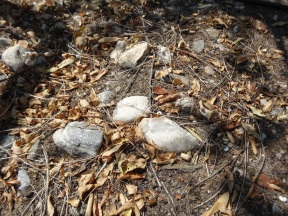
As I checked the ground for ditches, large rocks and anything else that could possibly leave me stuck in the middle of nowhere with a car that won’t go, as has happened before (see “Of fallen rocks and the kindness of Greek people” and “Check before parking on the roadside to visit old tombs”) I noticed on the rocky ground some sizeable rocks that looked like bits of marble. I looked closely, and they were. I wondered if they were ever part of a building, or if they were just natural rocks – made of marble. I don’t know, but it’s very common.
I got back onto the road and kept driving, looking for the brown and gold antiquities sign that would tell me I was in the vicinity. I found one, and after a couple of false turns, I rounded a bend and there was the lion, on a corner of two roads, looking magnificent.

It’s very similar to the one at Chaeronea, however the Lion of Amphipoli is larger. Greek soldiers found bits of it in 1912-3, then British soldiers found more in 1916. It was all put back together in 1937.
I asked the man selling fruit to the sightseers where the site of the ancient city was. “All around here,” he told me, sweeping his arm round expansively. I looked around and saw nothing but the road, fields, trees, and the lion. It turned out that like other sites in Macedonia, only some has been excavated, and they’re in separate locations. I was getting a bit down-hearted.
I got some directions to the museum from a Greek lady, which were a bit confusing at first because she was pointing left and saying right. Hardly surprising, because I know plenty of people who do the same thing when English is their first language, including me, but eventually we sorted it out, and I found the Museum.
There were many grave goods, including lots of gold. The Macedonians followed the Mycenaean style of graves, which was itself in the Homeric style, cremating then burying their dead with all those goods that the dead person valued and which would be useful to them in the afterlife.
 An interesting exhibit is the silver ossuary and gold grave wreath of Brasidas, the Spartan general who died in the battle of Amphipoli in 422BC defeating the Athenians under Kleon, and according to Thukydides was honoured as a hero and founder.
An interesting exhibit is the silver ossuary and gold grave wreath of Brasidas, the Spartan general who died in the battle of Amphipoli in 422BC defeating the Athenians under Kleon, and according to Thukydides was honoured as a hero and founder.
Also for my archery buddies, here’s a kylix, a shallow drinking cup from the C5th BC, with an archer depicted inside.

While there I learned of an Hellenistic house and also the remains of an ancient wooden bridge across the Strymon River, still a substantial stream today. Things were looking up.
I found the house, which was under lock and key in an eco-shed, and the “guard”, a slender, pretty young lady who wants to visit Australia, took me inside. The rooms had painted walls in red, blue, yellow, brown and black geometric patterns, and floors of white limestones with occasional black and green stones. This house was built in the C2nd BC and excavated in 1982.

The guard told me how to get to the ancient bridge, a few minutes drive away, to see her colleague, another guard. If she wasn’t there, wait a few minutes. The guard was indeed absent, so while waiting I explored the north wall of the city, a bonus that I hadn’t known about, which stand up to 7.5 metres tall at places.

The guard, another slender, pretty young lady, returned with the two Greek tourists she’d taken to the bridge, and showed us all more of the walls. The other people departed, and the guard told me that the bridge is five minutes away in the car, and if I would drive, she would come with me. At the site, she led me along more of the excavated city walls to another locked eco-shed, which remained locked, but into which I could see clearly through the protective wire fence. The bridge was built in the C5th BC, and is mentioned by Thukydides, as being instrumental for Brasidas during the Peloponnesian war, and later by Arrian, who says that Alexander used it when crossing the Strymon on his way to Asia. The British general and archaeologist W.M. Leake relates crossing it himself in 1835, so it lasted well. It was excavated in 1977-8 and is 275 metres long. The piles, existing trees, have petrified.

I loved Amphipoli. While so much of the city is still to be excavated, the concentration on several important finds works well. I’m really looking forward to returning one day to see the Kasta Tomb.

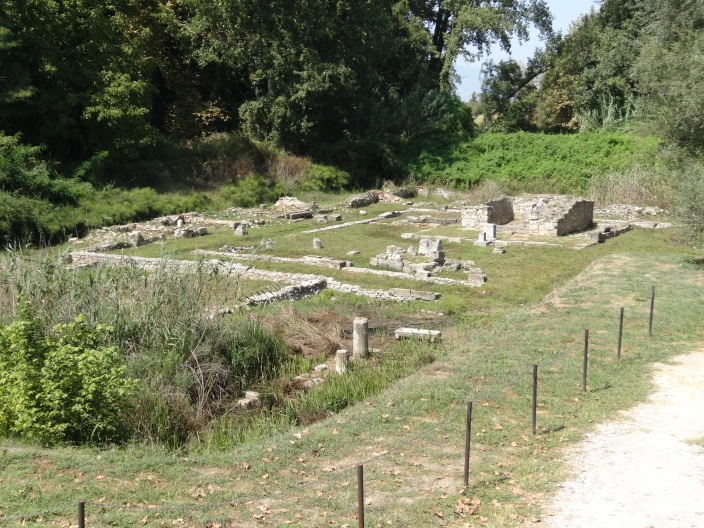
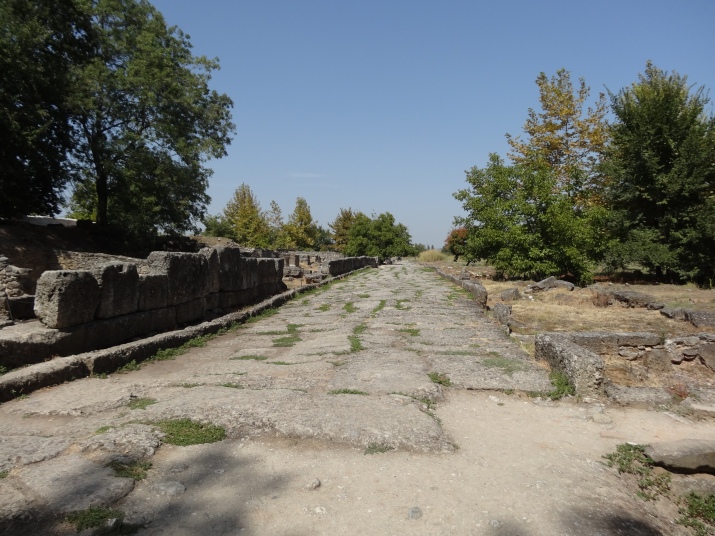 A statue of
A statue of 

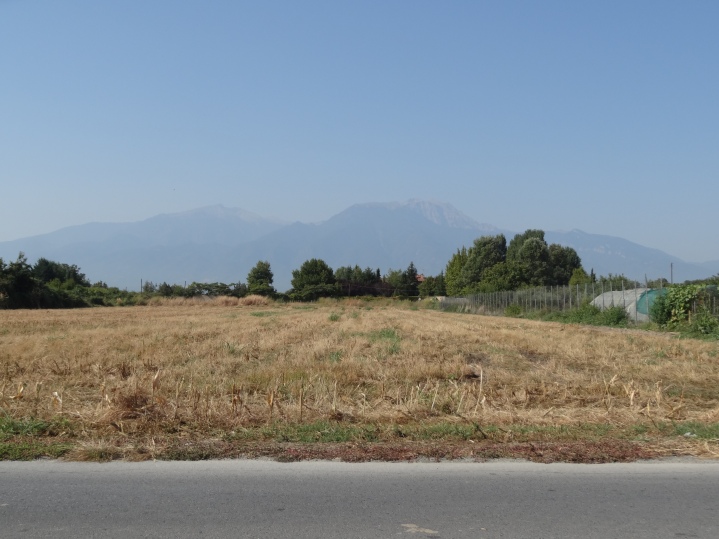












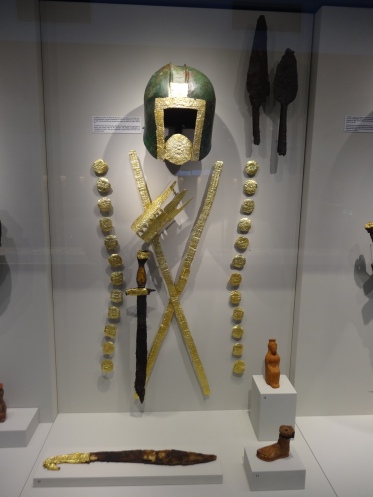
 “Turn right,” said the Google Maps lady. “Turn right.”
“Turn right,” said the Google Maps lady. “Turn right.”

 An interesting exhibit is the silver ossuary and gold grave wreath of Brasidas, the Spartan general who died in the battle of Amphipoli in 422BC defeating the Athenians under Kleon, and according to Thukydides was honoured as a hero and founder.
An interesting exhibit is the silver ossuary and gold grave wreath of Brasidas, the Spartan general who died in the battle of Amphipoli in 422BC defeating the Athenians under Kleon, and according to Thukydides was honoured as a hero and founder.





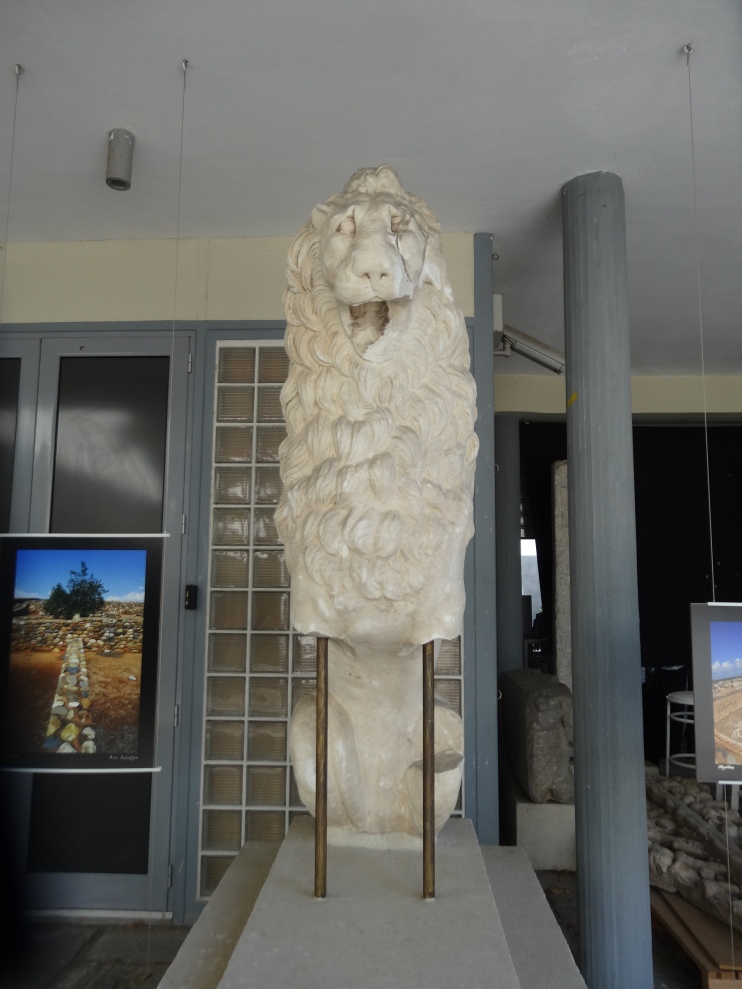
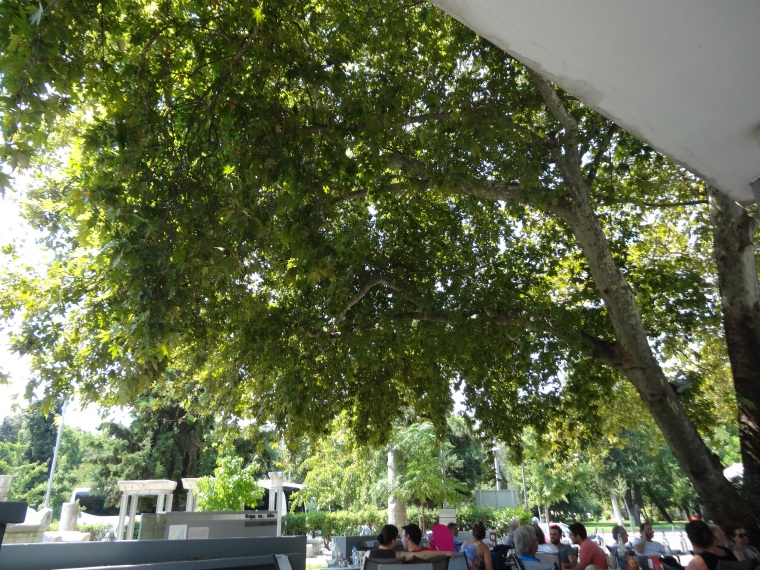

 There was a Roman milestone from the Via Egnatia, which was built in 145BC by the Romans under the governor of Macedonia, Gnaius Egnatius, as an extension of the Via Appia into Greece and Asia Minor, where it joined the ancient Persian Royal Road. Nowadays it’s a motorway called the Odos Egnatia, odos being Greek for road or street, and it isn’t quite so long, stopping at the border of Turkey. It even runs parallel to the ancient road for a way, and goes through Thessaloniki as its main street, while the motorway becomes a ring road around the city.
There was a Roman milestone from the Via Egnatia, which was built in 145BC by the Romans under the governor of Macedonia, Gnaius Egnatius, as an extension of the Via Appia into Greece and Asia Minor, where it joined the ancient Persian Royal Road. Nowadays it’s a motorway called the Odos Egnatia, odos being Greek for road or street, and it isn’t quite so long, stopping at the border of Turkey. It even runs parallel to the ancient road for a way, and goes through Thessaloniki as its main street, while the motorway becomes a ring road around the city.






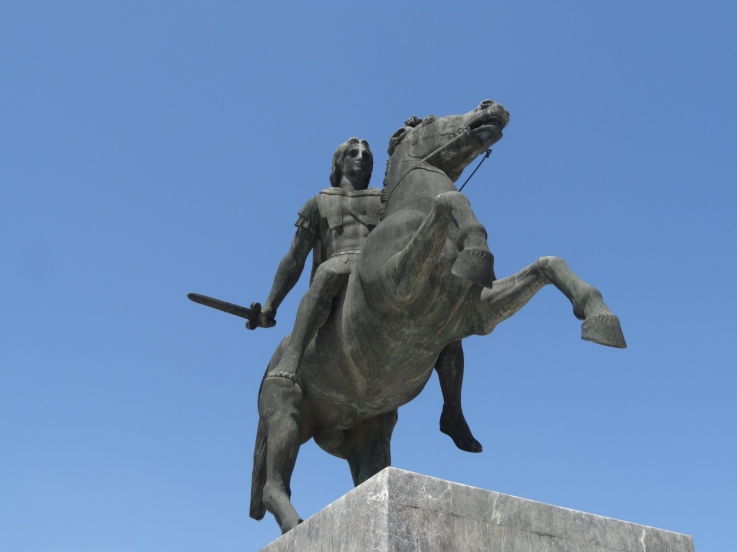


 During my wanderings I came across the
During my wanderings I came across the 

